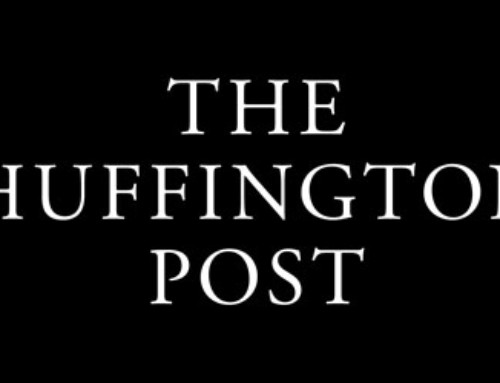By Russell C. Smith and Michael Foster
Poet Gary Lemons has the kind of insight that puts him ahead of the curve from his contemporaries. His former poetry books “Bristol Bay” and “Fresh Horses” were prime examples of lyric poetry accompanied by a unique voice. His current collection of poems, “Snake,” imagines a post-apocalypse Earth long after the extinction of the human race where a character that embodies all of the feelings, thoughts and emotions of our entire civilization when it no longer exists.
With Snake, Gary reinvented his personal method for creating poetry, he has created a work of deep insights that could very well reinvent how the world may now view poetry as an art form. We asked him a few question about the book from Red Hen Press and the two upcoming sequels in the works.
Despite its post-apocalypse setting, Snake’s reflections on the human condition feel thematically urgent to our rapidly changing times. What was the basis of creating a story from a far-future Earth where humanity has long been vanquished?
This is the sort of question I really welcome because it’s not the sort of question I ask myself when the story starts to de-cloak—but once written it becomes really important—for me at least—to trace the story back to the degree that’s ever possible to its origin—the place where the creative surge turned into something specific—in this case—Snake.
As you know—Snake came to me out of the dream world—first appearing as a stand-alone poem in my last book with Red Hen Press—Bristol Bay & Other Poems. I assumed that was it for me and Snake. But an entire new work flowed out of that poem. It was as if the dream it came from enveloped me—is still enveloping me—and almost like a ventriloquist—not that I’m a dummy (one hopes)—andspoke its vision of the future in these poems.
I’ve come to realize—by writing the second book—which is scheduled for print by Red Hen as well as the third—which is in progress—that the narrative—or the message coming through—is about the line between life and death—how it isn’t carved in stone, and how graves aren’t any more than wounds that heal on a larger body—and how what we call spirit is the dream around whatever the current reality seems to be. In other words—the future that Snake describes—where life forms on Earth are destroyed in a final cleansing—is not about the death of those forms but the transformation into a new reality. Like a quantum loop world. Uncertainty rules and realities are probabilities contained inside of one another. Events hatch out of events. What dies isn’t important—what can’t die is.
The character Snake at times it behaves like a physical entity, preoccupied with food and other basic needs. It also seems like a complicated stream of leftover consciousness, an artificial intelligence drawing upon leftover big data to contemplate its existence. What was the basis for creating the background for a character so difficult to pin down?
This is Snake describing itself—its physical needs are memories of the time it spent as a human being—a time when it had a wife or husband, and a child—a time when it filled the car with a fuel made from ancestors and tasted the bright flesh of cherries on its tongue—these still live in Snake and often in its exile—in the billion years of desolation—as it roams the atomized flesh of creation. It sucks on its memories like a brief neon sign flashing on the lost tavern of its tongue—memories drift into reality like they do all the time. And in Snake’s world they become indistinguishable—like protons wandering into the field of electrons—new shapes emerge from this random coupling.
So though Snake is the composite of everything that is gone—the infinite hard drive where the missing data is embedded—waiting for retrieval—it’s also the world around the leftover world the hard drive of humanity holds its secrets—it’s the dream of the hard drive out of which the hard drive appears—and Snake is the current that runs between them, powering both of them. When it returns to the dream, and when he goes back to Berlin and watches the people walking the streets continuing their lives as if they still exist—Snake’s actually present there because that world is also real—curled into the emptiness like an imaginary number inside the mind of the unborn. Snake is real everywhere—like we are—even as we hold to the conviction there is a single reality and the belief we can die in that reality forever.
Intelligence that risks everything is the entrance into creation—or one of them—according to Snake. Everything flowers out of our willingness to risk everything we know for the next step. In any direction. This is part of what these poems are teaching me and why I consider them a gift.
There are plenty of signs in “Snake” that suggest humanity didn’t end particularly well, hinting climate change played a major role in our demise, or cleanse as stated earlier. Do you see Snake as a cautionary tale, an acceptance of our own mortality, the ultimate Wikipedia for other civilizations to learn about ours, or something else entirely?
Absolutely. Snake is a warning—she’s been compressed and compacted into an heraldic figure by the retributive forces of nature—she’s seen the consequences of action as well as inaction—on one level the poems in the book are a condemnation of current environmental, social and cultural practices (which in combination form the spirit of any community if you will)—but they’re also a bridge out of temporal distress into opportunity. The presumption is the bridge already exists between infinite realities and the one we’re in and the transportation between them requires something like deeply focused dreaming—sort of how light—which is another form of consciousness—becomes a laser.
The poems suggest the necessity for responsible action in the local experience. The poems attempt to straddle possible worlds—in this state of awareness the endless realities curled inside the immediate experience appear like growth rings in a tree—which can’t of course be seen until the trees is cut into—this is what I meant by quantum loop worlds—when everything on the planet died—Snake didn’t die. This is instructive—this is a new possibility—that death too is illusory and trapped in a single variant.
Science says that all material is made of both particle and wave—but Snake says there is only wave—that particle realities are like saline levels in water—what Snake discovers is compressed into the poems in the same way the taste of a late summer blackberry is described—best sometimes just to grunt in satisfaction.




